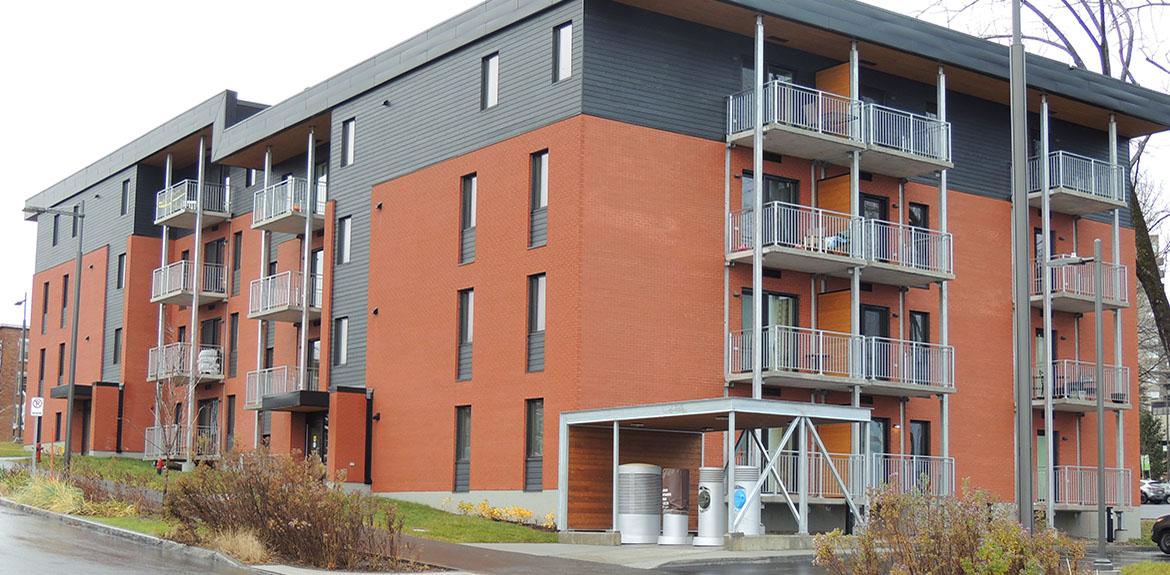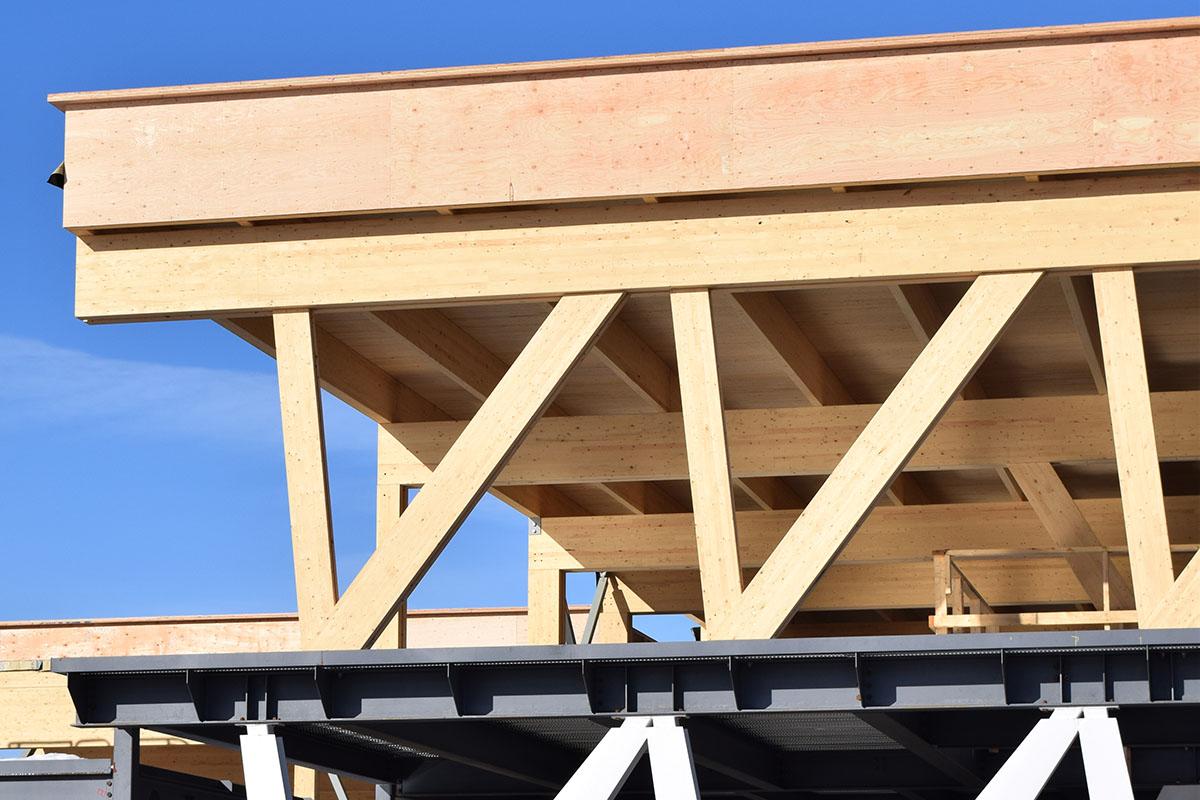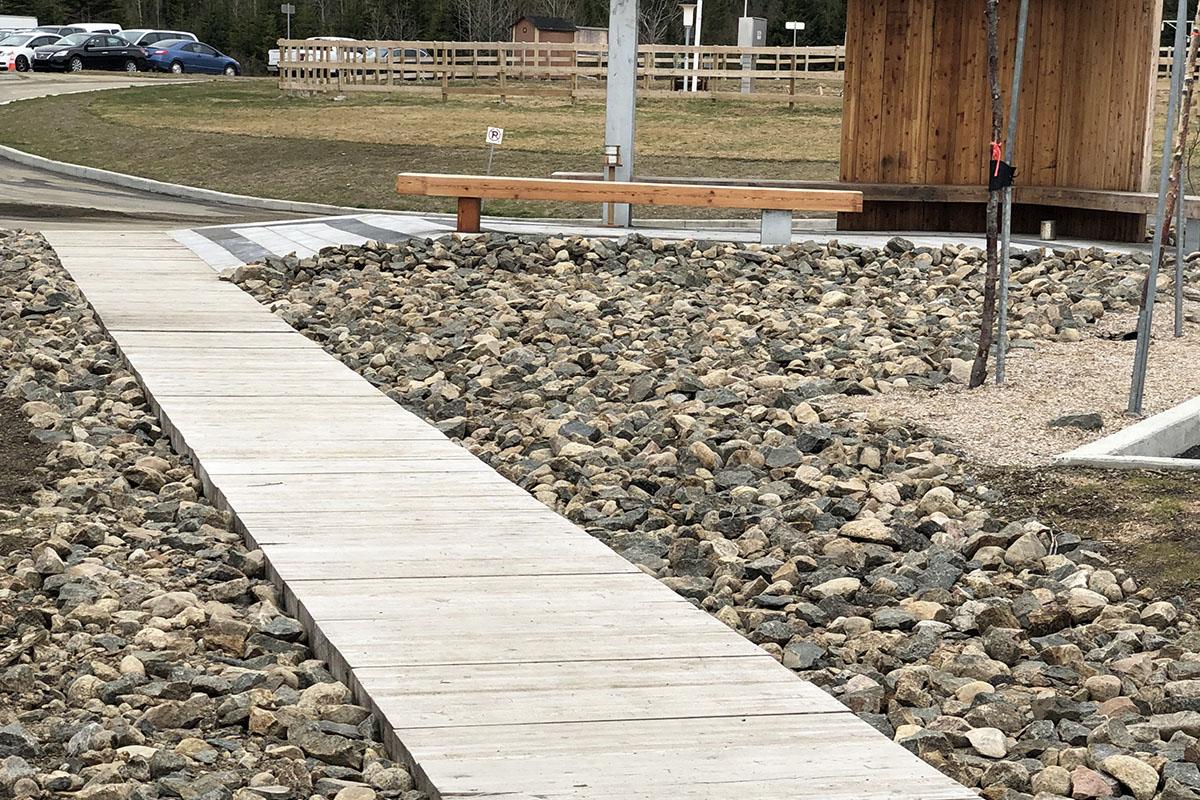Building the green way
Pierre Blanchet is studying the building industry from every angle. By using naturally sourced materials like wood and hemp, he hopes to reduce the construction industry’s ecological footprint.

Project architects
Pierre Blanchet, For. Eng., Ph. D.
Full Professor, Faculty of Forestry, Geography and Geomatics
NSERC Industrial Research Chair on Eco-responsible Wood Construction (CIRCERB)
Member of Centre de recherche sur les matériaux renouvelables de l’Université Laval (CRMR-UL)
Member of Institut Hydro-Québec en environnement, développement et société (Institut EDS)
Member of Centre interdisciplinaire de recherche en opérationnalisation du développement durable (CIRROD)
Team
Chair coordination: Pierre Gagné, Myriam Drouin, Jenny McKenzie
Collaborating professors
André Potvin, Ben Amor, Christian Dagenais, Conrad Boton (ETS), Etienne Marceau, Jean Proulx (UdeS), Jean-François Lalonde, Louis Gosselin, Luca Sorelli, Marc Oudjene, Nadia Lehoux, Sylvain Ménard (UQAC), Véronic Landry, Xiadong Wang, Yan Cimon
Student and postdoctoral fellow members
Postdoctoral fellows: Audrey Tanguy, Atif Hussain, Franz Segovia, Diane Schorr
Design component: Kristina Kincelova, Sébastien Royal, Xavier Tanguay, Zahra Hosseini, Charles Breton, Rizal Taufiq-Fauzi, Philippe Charest, Sylvain Cordier, Gabriel Jobidon, Jon Lefaivre
Construction component: Étienne Gauthier-Turcotte, Alexandre Morin-Bernard, Alexis Caron-Rousseau, Simon Veilleux, Nicolas Labrecque, Félix Bouffard, Catherine Joly-Lapalice, Marzieh Ghiyasinasab, Baptiste Giorgio, Simon Pépin, Clément Fleury, Truong-Thanh Nguyen, Cassandra Lafond, Minh Van Thai, Qian Cheng, Doan Trang Hoang, Viet Anh Vu
Operation component: Mathieu Létourneau-Gagnon, Juan Camilo Castaneda Munera, Moslem Sharifishourabi, Nataliia Gerzhova, Qiwei Qin, Xavier Tanguay, Rizal Taufiq-Fauzi, Truong-Thanh Nguyen, Simon Pépin, Alexandre Morin-Bernard, Qian Cheng, Minh Van Thai, Clément Fleury, Simon Veilleux
Prefab initiative: Basma Ben Mahmoud, Matheus Roberto Cabral, Allan CID, Kikki Lambrecht Ipsen, Ahmed Khouja, Roxanne Lessard, Axel Lorenzetti, Laurence Picard, Axel Zimmermann, Clément Blanquet du Chayla
Partners
Industry partners
Provencher_Roy, Coarchitecture, CIMA+, Sotramont, Société Laurentide, APCHQ, UL CLEB, Kruger, Maibec, Corruven, Art Massif, Les Chantiers Chibougamau, Vertima, Cecobois, FPInnovations, Profab, Maison Laprise, Ultratec, Soprema, Resolu, Oikos Concept
Government partners
Ministère des Forêts, de la Faune et des Parcs (MFFP), Québec Energy Transition, Société québécoise des infrastructures, Société d’habitation du Québec
Designing sustainable buildings
Whether built to last 25 years or 100 years, buildings have a long-term impact on the environment. Pierre Blanchet is trying to reduce the harmful environmental effects by focusing on natural, sustainable materials that also require less energy to manufacture. He is convinced that using more wood would reduce the carbon footprint of Québec’s construction industry. Professor Blanchet is testing his theory in different labs so he can convince decisionmakers to update construction standards.
Developing efficient materials
Another aspect of his work consists of developing new construction materials to replace less sustainable ones like concrete and polymers. Right now he is creating insulation from bio-based materials (wood) and agricultural fibres (hemp). He is also testing bioactive treatments with properties that protect surfaces and increase the longevity of the structures they protect. Professor Blanchet then checks the energy efficiency of these materials by using them on real buildings.
Analyzing occupant behaviour
One variable remains: human behaviour. You can create the most efficient materials possible, but you still have to consider the impact occupants will have on a building’s energy balance. This theory was put to the test at the Cité Verte construction site in Québec City. One apartment building, Habitations Trentino, was outfitted with sensors transmitting over 350 datasets/minute. Researchers were surprised to discover that 30 of the 40 units were using more energy than expected!

Sensors installed in the Habitations Trentino apartments in Cité Verte collected data on energy used by heating, hot water, ventilation, and other systems.

Damien Mathis tests the thermal properties of his natural solar batteries in tiny houses on campus.

In Canada, the National Building Code governs every aspect of building construction, from materials to techniques.

Pierre Blanchet tests the performance of a protective treatment on a wood sidewalk in Forêt Montmorency.
What’s next
As part of his second mandate as Chair, Pierre Blanchet is continuing his work on design and materials, with a particular focus on technology. At the same time, he is interested in the societal benefits of green building. What effects do materials have on occupants’ health, wellness, and comfort? How can we incorporate economic and social factors in building design? Professor Blanchet will try to answer these questions in the coming years.
NSERC Industrial Research Chair on Eco-responsible Wood Construction (CIRCERB)
Learn more about the Chair’s work.
+